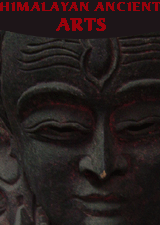Shop
By Type |
 |
|
|
|
|
|
|
|
|
|
|
|
|
|
|
|
|
|
|
|
|
|
|
|
|
|
|
|
|
|
|
|
|
|
|
|
|
|
|
|
|
|
|
|
|
|
|
|
|
|
|
|
|
|
|
|
|
|
|
|
|
 |
 |
Travel Packages  |
 |
 |
Newsletter |
 |
|
|
 |
|
 |
|
 |
|
 |
|
 |
|
 |
|
 |
|
 |
|
|
|
|
Tibetan Buddhist art in the form of images and symbols was created for may reasons. Tibetan Buddhist art is as old as Buddhism itself. Buddhism was introduced to Tibet by the seventh century and was proclaimed the state religion by the end of the eighth century. Although Buddhist influence waned during persecutions between 838 and 942, the religion saw a revival beginning in the late tenth century. It rapidly became dominant, inaugurating what is known as the "later diffusion of the Buddhist faith." During the first few hundred years of this renewed interest, many monks from Tibet traveled abroad to India ), the homeland of Buddhism, to study the religion, and Indian scholars were invited to Tibet to lecture and give teachings . Although Tibet's vast geographic area and its many adjacent neighbors—India and Kashmir, Nepal, the northern regions of Burma (Myanmar), China, and Central Asia (Khotan)—are reflected in the rich stylistic diversity of Tibetan Buddhist art, during the late eleventh and early twelfth century, Pala India became the main source of artistic influence. In the thirteenth century and thereafter, Nepalese artists were also commissioned to paint thankas and make sculptures for Tibetan patrons. By the fourteenth century, stylistic influences from Nepal and China became dominant and in the fifteenth century these fused into a truly Tibetan synthesis.
Although numerous monks were artists, there were also lay artists who traveled from monastery to monastery and, with a few exceptions, it is difficult to assign a particular style to a monastery or sect. Most artists were anonymous and rarely signed their works, although names have survived in texts, in murals on monastery walls, and on some thankas and bronzes. In addition to Tibetan artists, the names of Indian, Nepalese, Central Asian, and Chinese artists were recorded.
Many sculptures and paintings were made as aids for Buddhist meditation. The physical image became a base to support or encourage the presence of the divinity portrayed in the mind of the worshipper. Images were also commissioned for any number of reasons, including celebrating a birth, commemorating a death, and encouraging wealth, good health, or longevity. Buddhists believe that commissioning an image brings merit for the donor as well as to all conscious beings. Images in temples and in household shrines also remind lay people that they too can achieve enlightenment.
|
| ............................................................................................................................................................................................................................ |
 |
 |
|
 |
| |
|
|
| |
| |
|
|
 My
Shopping Basket My
Shopping Basket |
 |
| |
 Best
Seller Best
Seller |
 |
 |
 |
|
Grape Pashmina Shawl |
| Price: US$
71.43 |
|
|
|
| |
 Start
with your budget Start
with your budget |
 |
|
|
| |
 Tell
a friend Tell
a friend |
 |
Tell a friend and win exciting gifts...
Click here
to learn more. |
 |
 |
 |
 |
 |
 |
 |
| |
 |
|